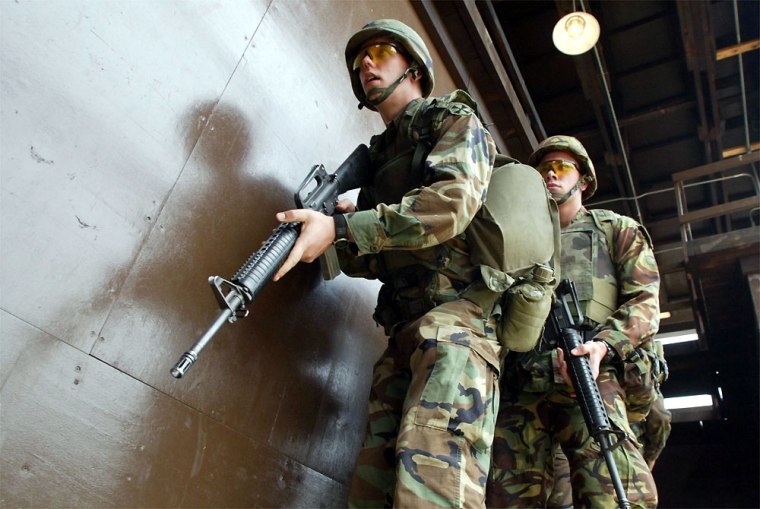The United States will pull nearly all its troops from their last front-line positions along the tense frontier with communist North Korea by October as part of a force reshuffle on the divided Korean peninsula, the United Nations Command said Tuesday.
Duties along the heavily fortified buffer, called the Demilitarized Zone, will be handed over to South Korea, which has 600,000 troops staring off against North Korea’s 1.1-million member military, the world’s fifth largest.
U.S. Gen. Leon J. LaPorte, joint commander of the U.S. Forces Korea and the U.N. Command, told the U.S. Congress last month the changes were meant to give South Korea a greater role in defending itself. Tuesday’s announcement was the first outlining details of the pullout.
North and South Korea are separated by the 2½-mile wide, 151-mile long DMZ, a Cold War vestige strewn with mines and laced with barbed wire and tank traps.
No more 'tripwires'
U.S. troops guarding the inter-Korean border are often regarded as a “tripwire” because they are presumed to take casualties during a North Korean attack, thereby prompting U.S. intervention.
U.S. troops will be pulled out of their positions at Observation Post Ouellette, a dusty crag with a deep view into North Korea, and the bases of Camp Bonifas and Camp Liberty Bell, according to a statement released by the U.N. Command, which has overseen U.S. and South Korean forces since the 1950-53 Korean War.
U.S. troops in the truce village of Panmunjum, straddling the border, will be reduced to just a handful.
There are about 600 South Korean and U.S. troops in the area now, the South Korean Defense Ministry said. South Koreans account for about 70 percent of the force, but that figure will jump to 93 percent after the Oct. 31 handover. After that date, U.S. forces will comprise just 7 percent of the region’s defensive punch.
On Sunday, North Korea condemned a reduction of U.S. forces along the DMZ as preparation for a pre-emptive attack against the communist country. The North sometimes argues that a pullout signals an attack, because it would reduce the risk of immediate U.S. casualties along the border fighting zone.
Other changes in South Korea
The United States is currently reviewing its military posture in South Korea as part of a global realignment to make its forces more nimble and technology-driven.
Earlier this year, the United States agreed to transfer about 7,000 U.S. forces and their families from its sprawling Yongsan Base in downtown Seoul to an expanded facility south of the capital by 2006.
It has also decided to close half of its bases in South Korea — 28 combat and support facilities and three training ranges — and return more than half the land occupied by U.S. forces to South Korea by 2011.
South Koreans have long complained that the U.S. military occupies prime real estate, and that its bases near densely populated cities contribute to crime. But most condone the presence as a deterrent against the North.
The U.S. Forces command has not announced any changes in overall troop strength on the peninsula.
